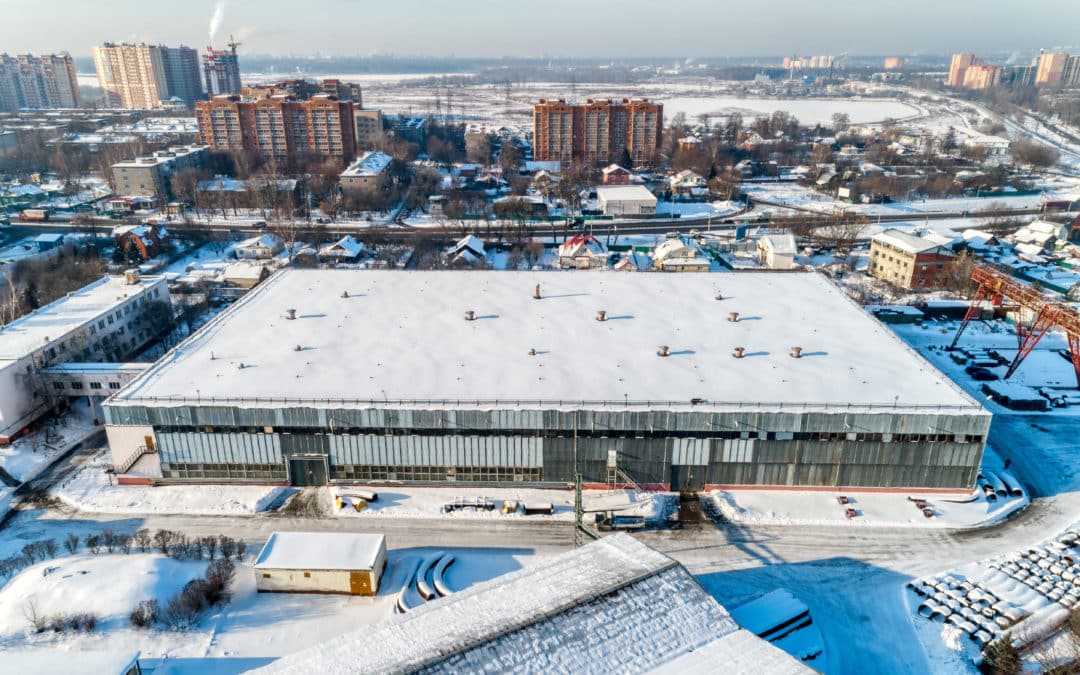There are few work environments more dangerous than the roof of a house, particularly during winter. Those unprepared for the challenges of winter roofing projects risk both injury and death. Be sure to keep these essential things in mind when roofing during the winter:
Stay Warm to Avoid Hypothermia
Hypothermia happens when a person’s core body temperature falls below the level required to keep the critical organs functioning. It is frequently affected by low temperatures and moisture. Human perspiration combined with winter cold conspires to conduct body heat away from a person’s body when working outside.
Signs that a person is suffering from hypothermia include drowsiness, shallow breathing, and clumsiness. If someone on your crew has hypothermia, call 911 immediately, remove wet clothing, and get the individual to a heated area as soon as possible. If a warm place isn’t nearby, cover the person with a warm blanket. Emergency Mylar or wool blankets are the most effective.
Roofers and other outside contractors should remember to wear three clothing layers in the winter to stay warm and avoid hypothermia. Such as:
- Inner Layer-to wick away moisture from the body.
- Insulating Layer– to retain as much body heat as possible (wool or goose down are the best)
- Exterior Layer-to protect from rain or snow
Workers should keep a fresh set of clothing and a warm blanket in the work truck, just in case someone on the crew develops hypothermia.
Keep Extremities Safe From Frostbite
If the skin is exposed to the wind and freezing temperatures for an extended time, frostbite can occur. Roofers are at risk for frostbite on the ears, fingers, toes and nose. When frostbite happens, the body part affected will become numb. Then it will turn color, going white, yellow, and ultimately black or blue. If a crewmember gets frostbite, immediately raise the body extremity’s temperature in lukewarm water and call for emergency help.
Avoid Dangerous Falls
Every roofing job requires a safety plan. Temporary rooftop guardrails can protect a crew from falls. However, fall-in-place accidents occur more frequently and usually result from workers changing direction or changing how they access the roof. (such as from a ladder onto a roof)
Always check your work ladder for ice to avoid any slips on an icy ladder rung, as well.
Remember that ladder usage should employ the “three-point rule.” This rule requires a user to have at least three points of contact with the ladder at all times. That could be two feet and one hand or two hands and one foot to stay safe as possible on a ladder.
Be Prepared for Winter Driving
Work-related travel hazards are often overlooked. Your crew should take a defensive driving course for year-round safety. The company will receive a discount on auto insurance and will be reassured that your workers are properly trained in winter driving techniques.
Correctly Remove Ice and Snow
Use a dedicated team to get rid of snow and ice before your main crew gets up on the roof. When the same workers are required to do both snow removal and their regular repair work, it can be just too much. Sometimes workers overlook their own safety and focus on completing their assigned jobs.
The best way to remove de-ice is with salt. Clear snow entirely because stepping on uneven snow can easily cause a roofer to lose their footing and fall.
Additionally, keep in mind that snow needs to be removed because it can hide other dangers from view. Snow may cover a skylight that a crew member could fall through, hurting both themselves and the roof.
Stay Hydrated, Even in the Cold
Lastly, hydration should also be a high priority in a safety plan, even in winter. Important tips to stay hydrated include:
- Beginning your day with at least 16 ounces of water. Try to grab a bottle after waking up and use it to measure your intake before work.
- Keeping your daily coffee allotment to two cups in the early part of the day and staying away from coffee from then on. Coffee is a significant diuretic that will hurt your hydration goals.
- Including liquids in your snacks and meals, such as warm tomato or chicken soup. Not only are hearty soups delicious, but the added liquid will keep you hydrated.
- Enjoying vegetables and fruits as snacks. Such foods have extra moisture that will benefit your body more than salty, dry foods.
- Chasing your alcoholic beverages with water. Alcohol is another diuretic, and it’s essential to replace the water lost after a happy hour or night out with friends.
- Monitoring the color of your urine. If your urine is darker than usual, you need to drink more water.
Staying safe on rooftops at any time of the year should always be a top priority. In winter, however, its importance becomes much more critical. Follow these tips, and you’ll cut your risk considerably.

